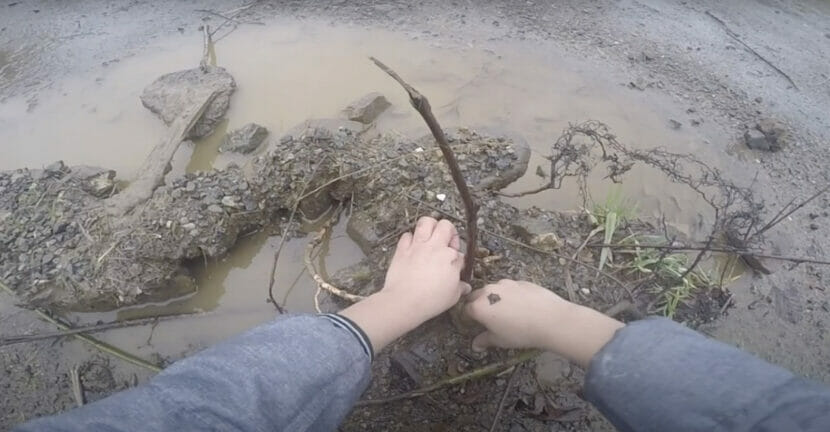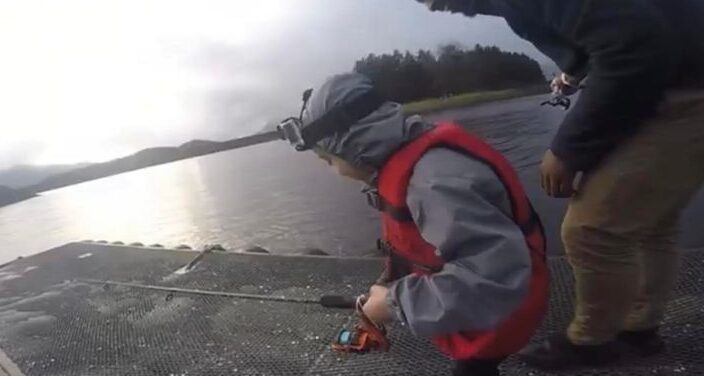
Making mud pies may not seem scientific. But in a sodden school yard in Hoonah, kids discern between different materials and tools for building by gathering the best sticks, rocks or pinecones. Or they modify those materials by wetting down dirt to make more mud for sculpting.
Education researchers Angela Lunda and Carie Green call that “mud science.” And they say that kind of experimentation in the natural world can help young children develop an interest in environmental science.
For Alaska Native children, activities in the natural world are also an important foundation for cultural identity.
“The children are already stewards of the environment, right? They already see themselves that way,” said Lunda, who is Lingít and teaches at the University of Alaska Southeast. “And that really is what defines us as Indigenous people.”
Lunda and Green’s research — known as the Molly Community Science Project — focuses on strengthening STEM programming in rural Alaska schools.
The project’s namesake comes from the popular PBS Kids program “Molly of Denali”, an educational animated series which features an Alaska Native main character. The goal is to build on the show’s success by developing “Molly of Denali”-themed multimedia resources with Indigenous students in mind. It’s a collaboration funded by the National Science Foundation.
Lunda says Alaska Native communities inherently possess a depth of environmental knowledge and skills. But Alaska Native students are underrepresented in science, technology, engineering and math fields, and traditional programs don’t make space for Indigenous identity.
“So it’s really important for us to be aware of that and to be actively working to try to change,” Lunda said. “That happens when we build on their world, their worldview. What they see, what they do.”
Their research design takes that literally, by outfitting Alaska Native elementary school children with GoPro cameras, which they wear as they play and explore outside.
Green — a professor of early childhood education at South Dakota State University — developed the research method during her previous work studying children’s relationships with the environment. She said kids will often forget that they’re wearing the cameras.
“And so they’ll tell you how they’re feeling, they’ll sing songs, they’ll narrate what they’re doing,” Green said. “All that sort of self-talk is really insightful.”
In one video, a child compares different crab shells on the beach, to figure out which ones are occupied and which ones are left over from molting. In another, a child tells her friends how to safely handle S’áxt, or Devil’s Club. And in yet another, a child goes fishing with their mother, and the clip captures them cheering as they reel in their catch.
“Yes! See? This is how you fish, because I caught something,” the child says. “Now put it in the water so it lives to get bigger.”

By examining those videos, Lunda and Green can identify activities that foster the empathy, knowledge and confidence kids need to act responsibly towards the environment. The research also incorporates interviews with elders, families and educators in Bethel, Hoonah and Northway, a village in the Interior.
Amelia Wilson is the project’s community liaison in Hoonah. She said much of the existing STEM programming for Alaska Native students targets older students.
But she hopes that the Molly project’s focus on elementary children will help to nurture cultural identity early on, to teach Alaska Native students that their Indigenous perspectives can make them stronger scientists.
“Respect for our environment, you know, that’s a cultural value that has always been,” Wilson said. “So how powerful would it be to have these children be those scientists that are making policies, making the decisions for our environment.”
She said Alaska Native representation in STEM is especially important as rural Alaska Native communities, including Hoonah, work to adapt to climate change.
For now, the researcher team is still working to analyze the videos and interviews. But they’ll begin to design and test “Molly of Denali’s” science programming in partner elementary schools over the next year.
